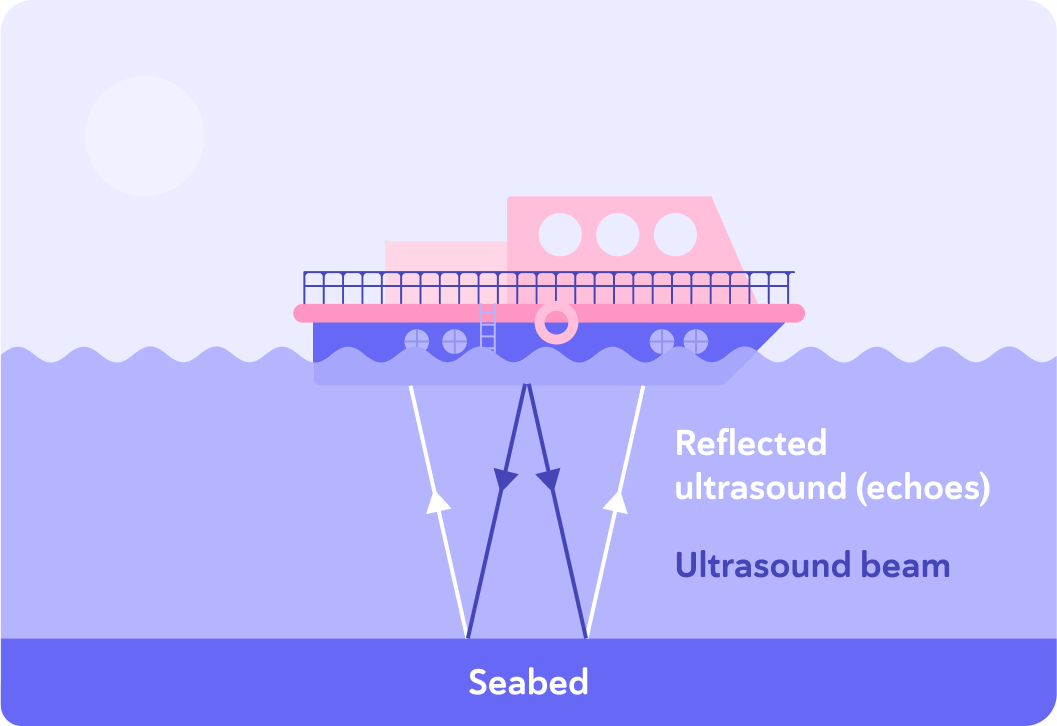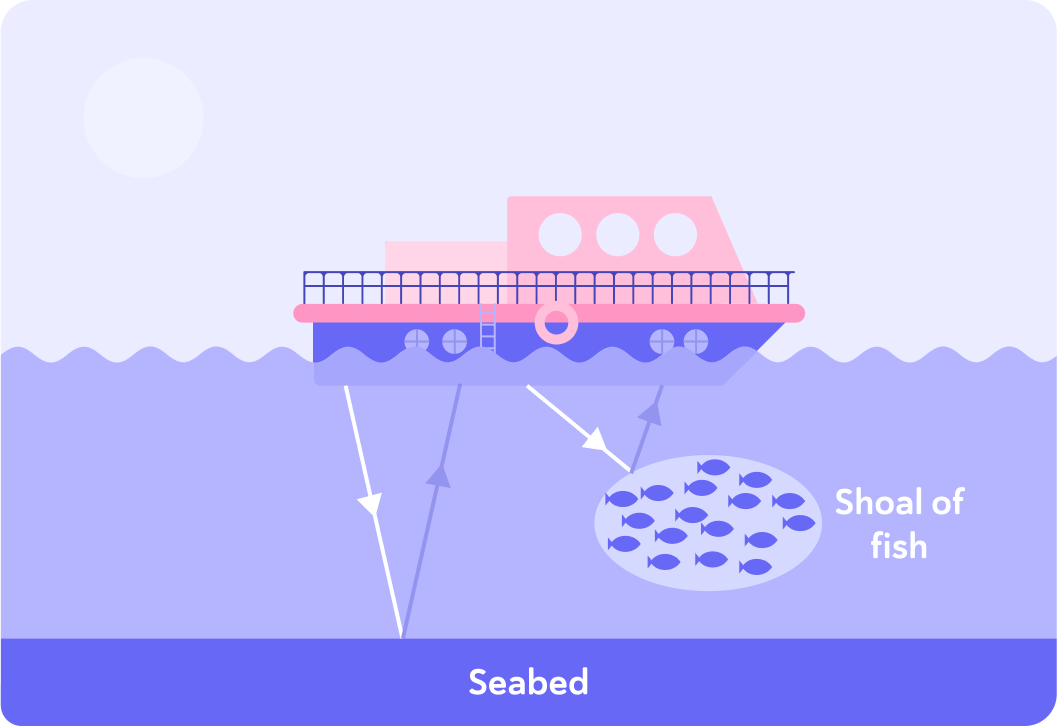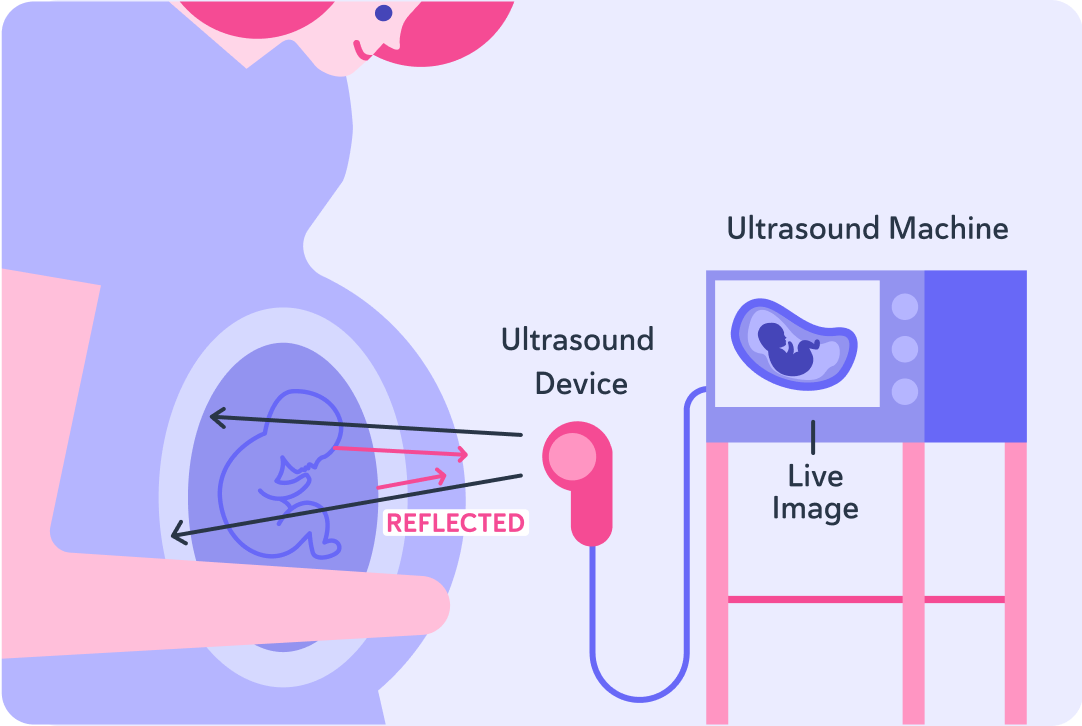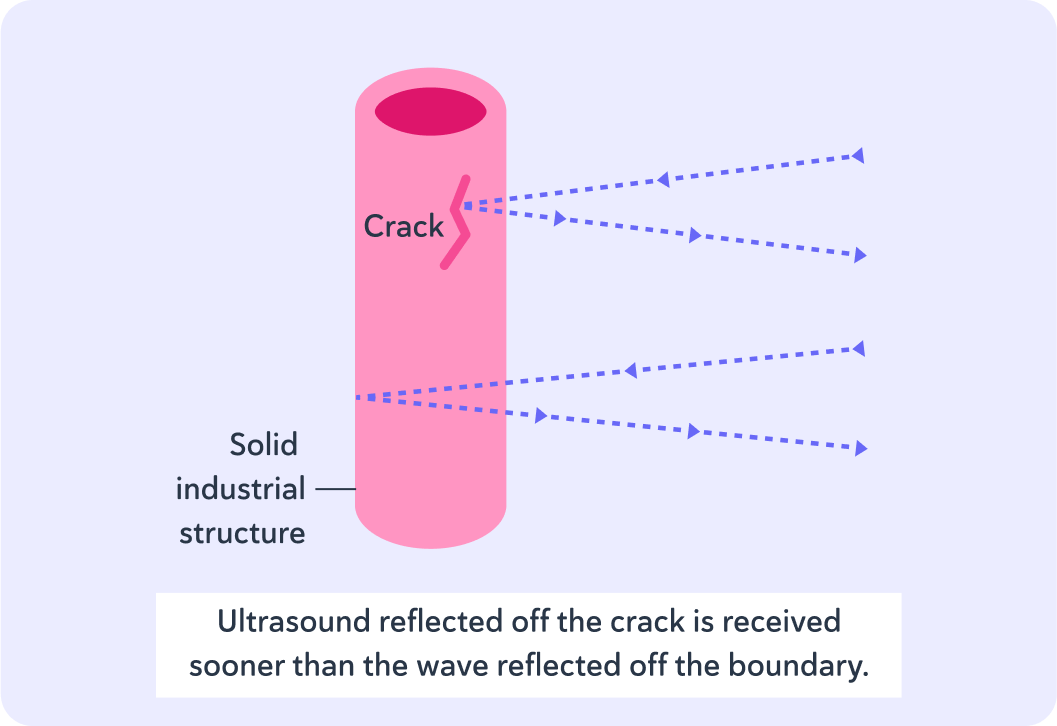YOU ARE LEARNING:
Uses of Ultrasound and Infrasound

Uses of Ultrasound and Infrasound
Ultrasound is used to calculate distances between the receiver and a surface, useful in imaging for medicine and industry. It can also be used to break up materials like dirt (for cleaning) or kidney stones. Infrasound can be used to monitor earthquakes and volcanoes.
Can you remember what frequencies infrasound waves have?

Infrasound is used for monitoring earthquakes and volcanoes. It is also used by some large animals for communication. For example, whales can communicate over hundreds of miles using infrasound!
Can you remember what frequencies ultrasound waves have?

Can sound waves get reflected?

Ultrasound is useful in finding distances. This is called echo sounding.
We measure the difference in time between the moment the sound is emitted and the moment it is reflected back in an echo to find out how far away the object is that reflected the sound. More on that in a later lesson.

A sea boat can direct a beam of ultrasound at the seabed. The seabed then reflects the sounds back up to a detector on the boat. Which equation should we use to find the depth of the water?
A) distance=speed×time B) v=λ×f


A fishing boat sends an ultrasound wave, travelling at 1400m/s towards the seabed. It detects the reflected waves 8s later. How far away is the seafloor?


Fishing boats use ultrasound to find the location of shoals of fish.
The fish will be between the boat and the sea floor so if there is a shoal of fish the sound will be returned quicker.

Ultrasound can also be used for imaging with ultrasound scanning. Ultrasound directed at an object is reflected by the surfaces inside it. A detector receives the reflections (called echoes) at different times, depending on the distance away from the detector the surfaces are. The detector produces electrical signals that are sent to a computer and then displayed on a screen as a picture.
Ultrasound scanning is used for foetal imaging. We can create images of a developing baby inside a pregnant woman's uterus. This is an alternative to X-ray imaging. Why do you think we use ultrasound instead of X-rays?
A) Ultrasound imaging is cheaper. B) Ultrasound imaging gives better pictures. C) Ultrasound imaging is safer.


Ultrasound scans can safely be used to produce images of internal organs, such as the kidneys and the heart. Ultrasound doesn’t travel well through body parts that may hold air, like the bowel or through bones, but most of the body's organs are accessible with ultrasound.
Ultrasound is much safer than X-rays. It does not cause mutations, and it does not increase the risk of cancer.

Ultrasound scanning can also be used in industrial imaging.
It can be used to check the quality of products by showing cracks or flaws inside metal objects.

The ability of materials to absorb ultrasound is also very useful.
In medicine, ultrasound is used to break up kidney stones.
The compressions and rarefactions of the ultrasound shake them until they crumble into smaller pieces.
Ultrasound can also be used for cleaning delicate items such as jewellery.
First the dirty items are submerged in a liquid cleaning solution. Then ultrasound waves are directed so that the liquid absorbs them. Like with kidney stones, the dirt and unwanted material break free, without the risk of damaging the items by handling them.
So what are some of the uses of ultrasound?

You can select multiple answers
To sum up!
Infrasound refers to the range of frequencies of sound waves that are below 20Hz
It can be used to monitor earthquakes and volcanoes.
Ultrasound refers to the range of frequencies of sound waves that are above 20,000Hz
Its ability to reflect off surfaces is used to calculate distances between the receiver and the surface. This is useful in imaging for medicine and industry. It can also be used to break up materials like dirt (for cleaning) or kidney stones. This is done by making the dirt/kidney stones absorb the ultrasound.
